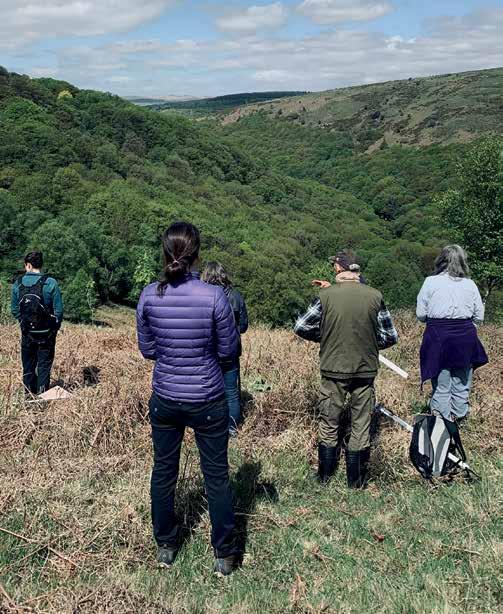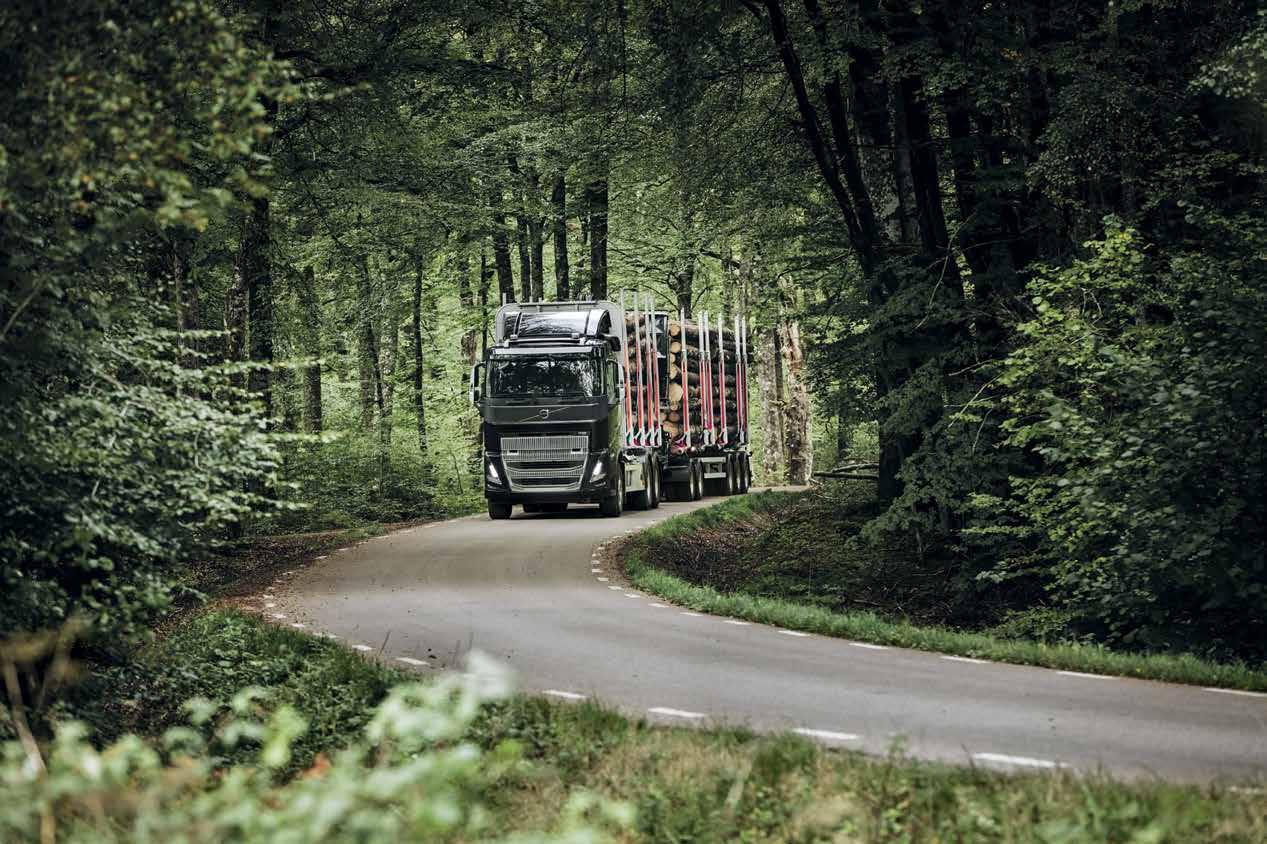
2 minute read
ELECTRIC TIMBER TRUCKS TO BE TRIALLED IN SCOTLAND
Scottish Forestry has committed £452,000 towards testing the use of state-of-the-art electric timber wagons to transport timber.
The forestry sector, whilst inherently green, is keen to use modern technology to tackle timber transport issues as part of its overall efforts to decarbonise and reach Net Zero.
in the creation of comprehensive management plans.
Does it detract from the skills of being a professional forester or timber merchant?
We don’t think so. For us it has meant that our ecologist can now undertake timber inventory whilst carrying out ecological assessments and build on her knowledge of forest condition. For those of us with a timber background, it will start to allow us to integrate ecological condition into our timber knowledge. It allows us to start undertaking inventory work in woodlands traditionally missed.
We could, for instance, go into a wood-pasture or urban street-tree realm, select a 100m sample radius, and undertake a volume and carbon assessment with ease. We can work in CCF systems with confidence, and it opens up good quality inventory to smallscale woodlands because of its speed and affordability. It means that we can create replicable base-line data for a woodland from which condition improvements can be measured over long timescales, and repeated by a range of individuals, ensuring accurate assessment of long-term impacts of forest management.
We are excited about where this goes next…
Running for three years, a first of its kind project in the UK will bring together two Scottish timber companies, James Jones & Sons Ltd and Scotlog Haulage, to trial electric timber lorries as part of their operations.
Two new Volvo electric vehicles are currently being manufactured in Sweden for specific use in this trial, made possible by a partnership with the Volvo Group and Cleaner EV. They are expected to be ready for use later this summer.
James Jones & Sons Ltd, one of the largest sawmill groups in the UK, will trial a 40-tonne articulated lorry from their sawmill in Lockerbie to transport timber to their Hangingshaws national distribution centre. Scotlog Haulage will be using a 44-tonne truck in the Highlands, moving roundwood timber from Inverness Harbour to West Fraser and other local mills.
Over the course of the trial, the vehicles will be evaluated for their achievable mileage vs battery consumption, durability, viability and total cost of ownership.
Around 7 million tonnes of wood are harvested from Scotland’s forests each year and transported to sawmills, board manufacturers and other processors, mostly on 44-tonne diesel lorries.
Announcing the £452,000 funding for the project, Rural Affairs Secretary Mairi Gougeon said: “Forestry is vital to helping Scotland achieve its net zero target by 2045. Around 7.6 million tonnes of harmful
CO2 is taken out of the atmosphere from Scotland’s trees each year and the timber used in houses and other wooden products lock away carbon for its lifetime.
“The forestry sector is innovative and always using new technology to increase its business efficiencies. I welcome this new trial and look forward to hearing more about the findings as we drive closer to Net Zero.”
A key element of the three-year trial is that all the partners involved are committed to sharing their experiences of running the electric lorries with others in the timber and rural haulage sectors.



Creel Maritime consultants will monitor the use of the lorries and arrange knowledge exchange opportunities over the course of the following three years.
“In terms of road haulage, the timber industry is pretty advanced in looking for solutions to decarbonise,” commented Neil Stoddart, Director of Creel Maritime. “For example, we are reducing diesel lorry miles on many projects and opting for transport by sea. Additionally, we are reviewing using an alternative fuelled barge to transport logs across a remote Loch in the Highlands.
“This is a very exciting project but there are big challenges in running articulated lorries on electric power, mainly on cost grounds and infrastructure. This three-year trial will look into all these aspects and I’m keen to share as much detail on this with the industry.”







